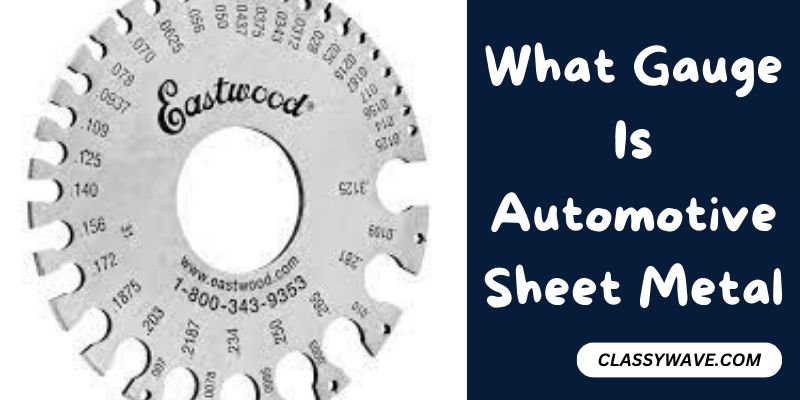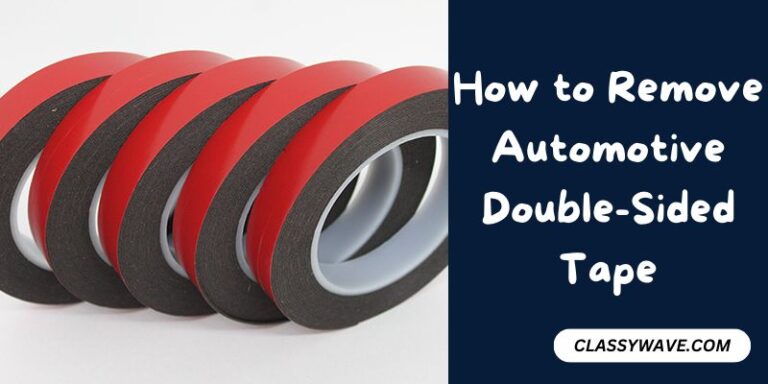What Gauge Is Automotive Sheet Metal – Guide
Automotive sheet metal plays a crucial role in the construction of vehicles, contributing to their structure, safety, and overall performance. One of the fundamental aspects of automotive sheet metal is its gauge, a measurement that holds significant importance in the manufacturing process. In this article, we will delve into the intricacies of automotive sheet metal gauge, its implications, and the factors influencing its selection.
I. Introduction
A. Definition of Automotive Sheet Metal
Automotive sheet metal refers to the thin, flat pieces of metal used in the construction of various vehicle components. These components range from body panels to structural elements, all contributing to the form and function of the automobile.
B. Importance of Gauge in Automotive Sheet Metal
The gauge of automotive sheet metal represents its thickness, and understanding this measurement is pivotal in ensuring the durability and performance of the vehicle. The next section will explore the concept of gauge and its significance in more detail.
II. Understanding Gauge in Automotive Sheet Metal
A. Explanation of Gauge Measurement
A gauge is a numerical representation of the thickness of sheet metal, typically measured in inches or millimeters. Contrary to intuition, a higher gauge number corresponds to a thinner sheet, while a lower gauge indicates a thicker one.
B. Common Gauge Sizes in Automotive Sheet Metal
Automotive sheet metal comes in various gauge sizes, each serving specific purposes. Common gauges range from 18 to 30, with 18 being thicker and 30 being thinner. The selection of the appropriate gauge is critical for the intended function and performance of the vehicle.
C. Significance of Choosing the Right Gauge
Choosing the right gauge is crucial for several reasons. It directly impacts the structural integrity, weight, and overall performance of the vehicle. The following section will delve into the factors influencing the selection of the appropriate gauge.
III. Factors Influencing Gauge Selection
A. Vehicle Type
The type of vehicle plays a significant role in determining the suitable gauge for automotive sheet metal. Commercial trucks, for example, may require thicker gauges to withstand heavy loads and provide enhanced durability.
B. Performance Requirements
The desired performance of the vehicle is another critical factor. High-performance cars may opt for lighter gauges to improve speed and fuel efficiency, while off-road vehicles may prioritize thicker gauges for increased durability in challenging terrains.
C. Material Considerations
The material used in automotive sheet metal also influences gauge selection. Traditional steel, high-strength steel, aluminum, and composite materials all have distinct properties that impact the gauge needed for optimal performance.
D. Cost and Efficiency
Cost considerations are paramount in the automotive industry. Thicker gauges often come with higher material costs, while thinner gauges may compromise on durability. Striking a balance between cost and efficiency is essential.
IV. Manufacturing Process of Automotive Sheet Metal
A. Roll Forming
Roll forming is a common manufacturing process for automotive sheet metal, involving continuous bending of the metal into the desired shape. Understanding the gauge is crucial in achieving the right balance during the roll-forming process.
B. Stamping
Stamping is another prevalent method, where metal sheets are pressed into specific shapes. Gauge influences the ease of stamping and the precision of the final product.
C. Welding
Welding joins different automotive sheet metal components. Matching the gauge is crucial for ensuring strong and durable welds.
V. Advances in Automotive Sheet Metal Technology
A. High-Strength Steel
Advancements in materials have led to the use of high-strength steel in automotive sheet metal. This allows for thinner gauges without compromising strength, contributing to lightweight and fuel efficiency.
B. Aluminum and Composite Materials
The adoption of aluminum and composite materials further impacts gauge selection. These materials offer unique advantages, including corrosion resistance and weight reduction.
C. Impact on Vehicle Design and Performance
The integration of advanced materials not only affects gauge selection but also influences vehicle design and performance. Lighter materials contribute to improved fuel efficiency and overall agility.
VI. Challenges in Working with Automotive Sheet Metal
A. Corrosion Issues
Corrosion is a common concern in automotive sheet metal. Choosing the right gauge and materials is essential to mitigate the impact of environmental factors.
B. Repair and Maintenance Considerations
Thicker gauges may pose challenges in terms of repair and maintenance. Understanding the trade-offs between thickness and ease of repair is crucial for long-term ownership.
C. Environmental Impact
The environmental impact of automotive sheet metal production is a growing concern. Choosing materials with lower environmental footprints and promoting sustainable practices is essential for the industry’s future.
VII. Future Trends in Automotive Sheet Metal
A. Lightweighting for Fuel Efficiency
The pursuit of fuel efficiency continues to drive innovations in automotive sheet metal. Manufacturers are exploring ways to further reduce weight without compromising safety and performance.
B. Sustainable Materials
The industry is witnessing a shift towards sustainable materials. Bio-based composites and recycled metals are gaining traction as viable alternatives, influencing gauge selection for eco-friendly practices.
C. Integration of Smart Technologies
The future of automotive sheet metal extends beyond physical properties. The integration of smart technologies, such as sensors and data-collecting materials, will impact gauge considerations for accommodating these advancements.
VIII. Tips for DIY Enthusiasts
A. Basics of Sheet Metal Working
For DIY enthusiasts working with automotive sheet metal, understanding the basics of sheet metal working is essential. This includes cutting, shaping, and joining metal components.
B. Safety Precautions
Safety should always be a priority. Using the appropriate protective gear and following safety guidelines ensures a secure working environment.
C. Choosing the Right Gauge for DIY Projects
DIY projects demand careful gauge selection based on the intended use. Thicker gauges may be suitable for structural components, while thinner gauges may suffice for cosmetic elements.
IX. Case Studies
A. Success Stories of Automotive Sheet Metal Implementation
Examining success stories provides insights into effective gauge selection and material choices, showcasing the positive impact on vehicle performance.
B. Lessons Learned from Failures
Analyzing failures in gauge selection or material use highlights the importance of making informed decisions in automotive sheet metal manufacturing.
X. Expert Insights
A. Interviews with Automotive Sheet Metal Experts
Gaining insights from industry experts sheds light on current trends, challenges, and future developments in automotive sheet metal.
B. Professional Recommendations for Gauge Selection
Experts’ recommendations for gauge selection offer valuable guidance for manufacturers and DIY enthusiasts alike.
Conclusion
In conclusion, the gauge of automotive sheet metal plays a crucial role in determining its thickness and durability, impacting the overall strength and structural integrity of a vehicle. Understanding the appropriate gauge for specific applications is essential for automotive professionals and enthusiasts alike. Whether it’s for body repairs, custom modifications, or restorations, choosing the right gauge ensures optimal performance and longevity. Stay informed about industry standards and consult with experts to make informed decisions when working with automotive sheet metal, ultimately contributing to the safety and reliability of the vehicles we drive.
FAQs
Why is gauge important in automotive sheet metal?
Gauge is crucial as it determines the thickness of the sheet metal, impacting the structural integrity and performance of vehicles.
What are the challenges associated with thicker gauges in automotive sheet metal?
Thicker gauges may pose challenges in repair and maintenance, and they can also impact the overall weight and fuel efficiency of the vehicle.
How does the choice of gauge influence the manufacturing process?
The gauge directly affects manufacturing processes such as roll forming, stamping, and welding, influencing the final product’s quality.
Are there eco-friendly options in automotive sheet metal materials?
Yes, the industry is moving towards sustainable materials, including bio-based composites and recycled metals, to reduce environmental impact.
What role do smart technologies play in the future of automotive sheet metal?
Smart technologies, such as sensors and data-collecting materials, are expected to influence gauge considerations for accommodating advancements in vehicle technology.







